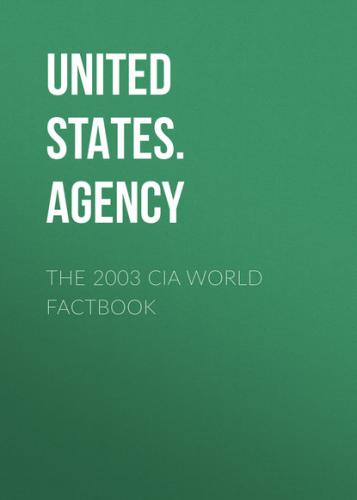Imports:
$487.3 billion f.o.b. (2002 est.)
Imports - commodities:
machinery, vehicles, chemicals, foodstuffs, textiles, metals
Imports - partners:
France 9.5%, Netherlands 8.2%, US 7.7%, UK 6.5%, Italy 6.4%,
Belgium 5.2%, Austria 4%, China 4% (2002)
Debt - external:
$NA
Economic aid - donor:
ODA, $5.6 billion (1998)
Currency:
euro (EUR)
note: on 1 January 1999, the European Monetary Union introduced the
euro as a common currency to be used by financial institutions of
member countries; on 1 January 2002, the euro became the sole
currency for everyday transactions within the member countries
Currency code:
EUR
Exchange rates:
euros per US dollar - 1.06 (2002), 1.12 (2001), 1.09 (2000), 0.94
(1999), 1.76 (1998)
Fiscal year:
calendar year
Communications Germany
Telephones - main lines in use:
50.9 million (March 2001)
Telephones - mobile cellular:
55.3 million (June 2001)
Telephone system:
general assessment: Germany has one of the world's most
technologically advanced telecommunications systems; as a result of
intensive capital expenditures since reunification, the formerly
backward system of the eastern part of the country, dating back to
World War II, has been modernized and integrated with that of the
western part
domestic: Germany is served by an extensive system of automatic
telephone exchanges connected by modern networks of fiber-optic
cable, coaxial cable, microwave radio relay, and a domestic
satellite system; cellular telephone service is widely available,
expanding rapidly, and includes roaming service to many foreign
countries
international: Germany's international service is excellent
worldwide, consisting of extensive land and undersea cable
facilities as well as earth stations in the INMARSAT, INTELSAT,
EUTELSAT, and INTERSPUTNIK satellite systems (2001)
Radio broadcast stations:
AM 51, FM 787, shortwave 4 (1998)
Radios:
77.8 million (1997)
Television broadcast stations:
373 (plus 8,042 repeaters) (1995)
Televisions:
51.4 million (1998)
Internet country code:
.de
Internet Service Providers (ISPs):
200 (2001)
Internet users:
32.1 million (2002)
Transportation Germany
Railways:
total: 45,514 km (21,000 km electrified)
standard gauge: 45,276 km 1.435-m gauge (20,084 km electrified)
narrow gauge: 214 km 1.000-m gauge (16 km electrified); 24 km
0.750-m gauge (2002)
Highways:
total: 230,735 km
paved: 230,735 km (including 11,515 km of expressways)
unpaved: 0 km (1999)
Waterways:
7,500 km
note: major rivers include the Rhine and Elbe; Kiel Canal is an
important connection between the Baltic Sea and North Sea (1999)
Pipelines:
condensate 325 km; gas 25,289 km; oil 3,743 km; refined products
3,827 km (2003)
Ports and harbors:
Berlin, Bonn, Brake, Bremen, Bremerhaven, Cologne, Dresden,
Duisburg, Emden, Hamburg, Karlsruhe, Kiel, Luebeck, Magdeburg,
Mannheim, Rostock, Stuttgart
Merchant marine:
total: 337 ships (1,000 GRT or over) 6,036,397 GRT/7,334,067 DWT
ships by type: cargo 94, chemical tanker 15, container 203,
liquefied gas 3, passenger 3, petroleum tanker 5, railcar carrier 2,
refrigerated cargo 1, roll on/roll off 4, short-sea passenger 7
note: includes some foreign-owned ships registered here as a flag of
convenience: Chile 1, Finland 5, Iceland 1, Netherlands 3,
Switzerland 1 (2002 est.)
Airports:
551 (2002)
Airports - with paved runways: total: 328 over 3,047 m: 11 2,438 to 3,047 m: 54 914 to 1,523 m: 69 under 914 m: 131 (2002) 1,524 to 2,437 m: 63
Airports - with unpaved runways: total: 223 2,438 to 3,047 m: 1 1,524 to 2,437 m: 2 under 914 m: 189 (2002) 914 to 1,523 m: 31
Heliports: 40 (2002)
Military Germany
Military branches:
Army, Navy (including naval air arm), Air Force, Medical Corps,
Joint Support Service
Military manpower - military age:
18 years of age (2003 est.)
Military manpower - availability:
males age 15–49: 20,509,838 (2003 est.)
Military manpower - fit for military service:
males age 15–49: 17,399,936 (2003 est.)
Military manpower - reaching military age annually:
males: 472,946 (2003 est.)
Military expenditures - dollar figure:
$38.8 billion (2002)
Military expenditures - percent of GDP:
1.38% (2002)
Transnational Issues Germany
Disputes - international:
none
Illicit drugs:
source of precursor chemicals for South American cocaine
processors; transshipment point for and consumer of Southwest Asian
heroin, Latin American cocaine, and European-produced synthetic drugs
This page was last updated on 18 December, 2003
======================================================================
@Ghana
Introduction Ghana
Background:
